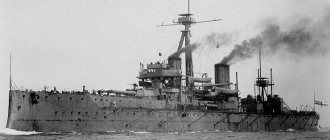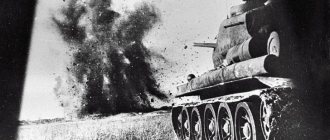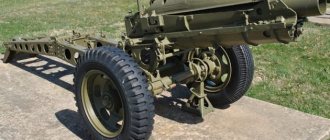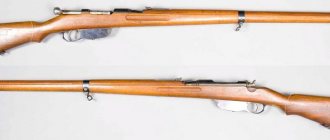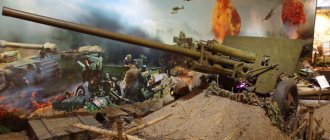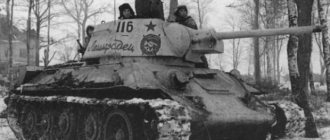A mortar is an artillery weapon that is equipped with a short barrel (mostly 15 caliber) and is intended for mounted firing. The weapon is aimed at destroying particularly strong defensive structures, and is also aimed at destroying targets that are hidden behind strong dugouts or trenches. Let's consider the features of this product, as well as its development from the time of its creation to the present day.
History of creation
The mortar is a weapon that has been used since the 15th century. In modern interpretation, this term is sometimes used to refer to mortars of a certain caliber. In military slang, the word in question is a designation for short-barreled guns that are not equipped with a thrust plate.
The term “mortar” itself was used in Russia under Peter the Great in relation to artillery pieces in the configuration of long-barreled guns, as well as their short-barreled analogues. Then similar guns were divided into howitzers, mortars and guns for flat fire.
The main purpose of the weapon:
- defeat of enemy personnel;
- elimination of hidden trenches and walls of fortifications;
- destruction of buildings and fortifications during sieges.
The multi-barrel mortar usually used iron cannonballs. The metallurgy of that time did not know how to produce shells with thin walls, which could not make it possible to withstand a shot from a gun without breaking.
The filling of the mortar, a photo of which is presented below, could be equipped with various explosives, affecting the speed of the cannonball, as well as the distance of movement when fired. Taking into account the parameters of the force during the shot and the final result, the effect of the salvo fire corresponded to a howitzer. This option was intermediate, contributing to the possibility of recharging the core when the charge was overloaded, even with an excess size. Ancient modifications reached enormous sizes, were transported on special separate carts, after which they were unloaded onto the ground to be moved in a stowed position.
Ship's mortar
At the end of the 15th century, another weapon appeared on ships - short-barreled mortars. They were used for mounted shooting with an elevation angle of over 45 degrees. Such weapons made it possible to use various types of cores that could overcome high barriers. Usually, ships with mortars on board during military clashes became the second row of military ships.
The tactical task of these guns was to fire “from above” at close range. If you could hide behind the thick sides of the hull from shots from simple cannons, it was impossible to protect yourself from shells flying from above. The deck and below-deck spaces began to be protected already in the era of aircraft carriers (the deck as a passive type of protection).
The first examples had a barrel length of up to 10 calibers. The flight range was shorter than that of previous models, but such a gun could use explosive cannonballs. The speed of a mortar projectile is low, which means the overload when fired is less than in previous versions of artillery. The core did not explode upon departure, but, exploding on the enemy deck, it created many problems for the enemy. In addition, its production did not require much effort and a large amount of material. This weapon had an unchanged appearance almost until the 19th century.
Armament of the first ships
- History of ship weapons: Ram, Harpagus, Boarding
Varieties
Ship guns - history of development
Falconet - small-caliber gun
Mortar - a cannon with a short barrel
Types of cannon shells
Images
The mortar had a solid structure. The incendiary mixture was often poured from the side of the barrel. And ignition was carried out through a special hole in the lower part of the barrel.
Also, these weapons were used when shelling fortresses from the sea. Huge cannons and bombards were often unable to penetrate the strong walls of the barrier. In this case, mortars were used. These could be used to launch heavier cannonballs or hollow projectiles with explosive inside. At the same time, they flew over walls and hit internal structures.
Increased mobility
The first attempts to place a mortar cannon on railway platforms were made in 1861 (during the American Civil War). This decision made it possible to speed up the delivery of artillery to remote parts of the southern army. Similar experience in transporting guns was used repeatedly. In 1864, analogues with a 13-inch caliber were based on the platform. They were used during the siege of Pittsburgh, firing charges weighing about 100 kg at a distance of up to 5 kilometers. In the European part, such modifications began to be used in 1871 (the siege of Paris during the Franco-Prussian War). This placement of artillery made it possible to fire at the city from different sides.
Links
Design - Charging method
- Trunk
- Leiner
- Chamber
- Breechman
- Carriage
- bed
- Recoil devices Recoil brake
- Knurl
- Muzzle brake
- Sight design
- Shield cover
Unique personalized weapons - Tsar Cannon
- Little David
- "Dora" and "Gustav"
- Charles
- Bruce
- Parisian gun
- Mallet Mortar
- Mortier monster
- Pumhart von Steyr
- Faule Mette
- Dulle Griet
- Basilica
- Project "Babylon"
Classification - A gun
- Howitzer gun
- Howitzer gun
- Howitzer
- Howitzer-mortar
- Mortar
- Mortiro gun
- Mortar-mortar
- Mortar
- Ampoule launcher
- Bomb launcher (field)
- Recoilless rifle Davis gun
- Gelvich gun
- Ryabushinsky gun
- Kurchevsky gun
- Rocket gun
- Gerlich gun
- Ghast Cannon
- Revolver cannon
- Multi-barreled gun
- Multi-chamber gun
- Zalinsky gun
- Railgun
- Gauss gun
- Electrothermal gun
- Electrothermochemical gun
[/td]
- Field gun
- Mining gun
- Siege weapon
- Anti-tank gun
- Anti-aircraft gun
- Fortress weapon
- Coastal defense gun
- Self-propelled gun
- Self-propelled gun
- Tank gun
- Railway gun
- Ship/boat gun
- Aircraft gun
- Small caliber gun
- Medium caliber gun
- Large caliber gun
- High power weapon
- Weapon of special power
- Battalion gun
- Regimental gun
- Divisional gun
- Hull gun
- Army artillery gun
- Artillery gun of the reserve of the main command
Development at the end of the 19th century
The word "mortar" surfaced at the end of the 19th century, when Germany decided to organize mobile mobile squads of siege units. These units included 21 mortars and six 150 mm howitzers. They were converted from bronze cannons by inserting a steel pipe into them. A similar method was widely used at that time when modernizing cast iron and bronze tools.
This weapon was not particularly maneuverable, but it made it possible to deliver the kit relatively quickly to the desired section of the front. Following the Germans, Poland, Austria and some other European countries followed the same path. As a rule, the ammunition load included, in addition to mortars, howitzers. When fired, the recoil speed was very significant, which caused strong jumps and sideways movements of the gun. In this regard, restoring the original weapon position required additional physical and time costs.
Land mortars against warships
Land and deck specimens were practically no different from each other. During the Russo-Japanese War, during the siege of Port Arthur, Japanese 280-mm mortars installed on concrete bases in the mountains came as a complete surprise to Russian ships. The first to sink was the battleship Poltava. Eleven 200-kg shells hit mainly the left side of the ship, a fire started, and soon the ship ran aground. Over the next 3 days, mortars fired more than 800 shells, as a result of which five more famous ships of the Russian fleet were sunk. The prototype of the Japanese mortar was German howitzers designed at the end of the 19th century.
The use of mortars when attacking enemy ships was quite justified. The weapon was hidden behind powerful barriers: a fortress or a rock. At the end of the 19th and beginning of the 20th century, the projectile range reached 7 km. The accuracy of the hit left much to be desired, however, even one hole could cost the life of the ship. The military sought to get not through the main, most protected deck, but into places where the armor was not so strong.
20th century
At the beginning of the 20th century, the design of howitzers and mortars practically coincided with analogues of other artillery pieces of this type. The only differences were in barrel length and caliber. Among the modifications of the mortar, the following variations can be distinguished:
- "Skoda" - was equipped with shells weighing 384 kg (model 1911).
- “Kruppa” - used by the Russian army in the First World War, had a range of about 4 kilometers.
- Mortar-mortars, which appeared during the 1914 war and combined the power of cannons and the rate of fire of mortars.
Disadvantages of the gun: low rate of fire, difficulty in delivering ammunition, rapid fatigue of the gun crew due to the same factors.
During the same period, mortar howitzers were developed, which were used to destroy particularly strong fortifications and high-strength objects. The guns had an elongated barrel and a lower elevation angle.
Creation of a self-propelled 600-mm mortar "Karl"
0
The creation of new artillery systems of ultra-large calibers in Germany began to be thought about in the mid-1930s. In 1934, the Army Weapons Department sent technical specifications to German enterprises to create guns capable of hitting protected objects with concrete walls up to 9 meters thick with one projectile. Already in 1935, a project for a 600 mm mortar was developed. It was assumed that this artillery system would be able to launch projectiles weighing two tons over a distance of four kilometers. Systematic work on the project began in 1936. And the following year, the military was able to appreciate all the achievements of German designers.
×
0
The design of the new artillery installation was carried out under the direct supervision of Artillery General Karl Becker. He supervised the project from the military side and made several valuable comments and suggestions during development. It was in honor of this officer that the 600-mm self-propelled mortar, which at the factory was simply designated Gerät 040 (product 040), received the semi-official name “Karl”. This name was firmly attached to the installation throughout post-war historiography. In total, the German concern Rheinmetall-Borsig assembled seven self-propelled mortars. Six of them took part in hostilities. Since they were all truly piece goods, each of them received its own name: I - “Adam” (Adam), later renamed “Baldur” (German: Baldur); II – “Eva”, later renamed “Wotan”; III – “One” (Odin); IV – “Thor”; V – “Loki”; VI – “Ziu”; VII – “Fenrir” – a prototype that did not take part in combat operations.
0
The 600 mm Karl mortar, which could have been used against French and Belgian fortifications, was late for the invasion of France. The French army and the British Expeditionary Force were defeated fairly quickly, and the Maginot Line itself did not play any significant role, failing to protect France from defeat. The first installation was presented to the German military only at the beginning of July 1940. At the same time, the complete delivery of the 600-mm Adam self-propelled mortar took place only on February 25, 1941. The Wehrmacht received the sixth Tsiu installation on July 1, 1941. And the seventh mortar “Fenrir” was ready only in 1942. On it, German engineers were working on the option of installing a new 540-mm gun.
The Second World War
Closer to the 40s of the last century, mortars were 280 mm howitzers. Another option (German mortar) is the Karlgeret-600. Subsequently, such guns were replaced by mortars. In the German army, the design of the mortar was not completely forgotten, despite the fact that the short-barreled versions were inferior to standard guns. After the Battle of Stalingrad, Hitler ordered the development of modernized analogues intended for siege operations. However, the problem of rate of fire has not disappeared. Many experts note that the use of such tools was an unnecessary waste of time and money. Bombing gave a more effective result, given the fact that Germany had a decent supply of large bombers.
Popular modifications
Below is a list of the most used mortars at all times since the creation of this weapon:
- German modification "16" with a caliber of 210 mm.
- "Malbork".
- Russian version of the gun manufactured in 1727. Caliber - 0.68 feet, weight - 705 kg.
- "Dictator" - American version, used during the Civil War.
- "Skoda" (1911).
- "Karlgerät" is a German mortar from World War II.
Modernity
Among the modern analogues of the weapon in question, one can note an Israeli product called “Sherman”. The gun is mounted on caterpillar tracks. The technique was used in the middle of the last century. The caliber of the weapon was 160 mm. After the end of World War II, mortars finally fell out of use. They were replaced by mortars, howitzers and multiple launch rocket systems. During the military campaign of 1941-1945, the Red Army used guns of this type under the name BR-5. Only 47 copies were produced.
In conclusion
A mortar is an artillery weapon that is equipped with a shortened barrel (the length is at least 15 calibers). It is intended for mounted shooting, designed to destroy defensive fortifications, which are particularly durable. In addition, the cannon was used to destroy trenches and shelters. In the modern army (in some countries), the concepts of “mortar” and “mortar” have the same meaning. The essence of the weapon is that the recoil without a reinforcing plate is transmitted directly to the ground.



